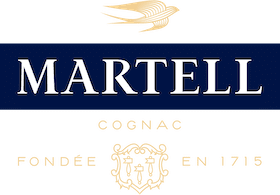Collection
Cocktails
La maison
Visit Us
What is the difference between brandy and cognac?

Do you know the difference between brandy and cognac?
These two well-known spirits either share everything in common, or not much at all – depending on how you frame the question.
Confused? Actually it’s quite simple.
Brandy has been made for centuries, anywhere wine is made, and can describe any spirit distilled from fermented fruit juice. The name comes from the Dutch word brandewijn meaning ‘burnt wine’, a reference to its distillation with heat.
Many countries have their own national brandy, such as Slivivitz in Poland, made from plums.
Cognac is not the same as brandy, but is a type of brandy and earns its name following very strict production methods, which do not apply to other brandies.
Compared to other brandies, cognac was quickly recognized for its superior ability to age, the result of high acidity in its grapes.
As such, the Cognac region has been considered the benchmark for brandies worldwide for hundreds of years, and remains so today.
How is cognac produced?
Cognac is an amber-coloured alcoholic drink, made in France, in the wine growing regions of Charente and Charente-Maritime surrounding the town of Cognac.
These include the type and origin of grapes. Cognac is mainly made from Ugni Blanc grapes.
The region is divided into six zones, called ‘crus’ – Borderies, Grande Champagne, Petite Champagne, Fins Bois, Bon Bois and Bois Ordinaire. The grapes are typically harvested around October once reaching maturity. Notably, Martell only uses grapes sourced from the first four crus, considered the most prestigious.
While all brandies are distilled and aged, the particular process to distill cognac is as follows: the spirit is made from distilling white wine to create an eau-de-vie, ageing it in oak casks for a minimum of two years and then blending different eaux-de-vie to create a specific flavour.
Legally, any eau-de-vie produced this way that has aged for two years or more can be called a cognac. (Maison Martell makes its own distinction, which is an eau-de-vie, however long it has aged, remains an eau-de-vie until it has been blended.)
Cognacs produced according to these strictly prescribed methods are recognised with the famous AOC label, appellation origine contrôlée. This sought-after certification verifies the cognac’s authenticity and connection to the region, and sets it apart from generic brandy.
Only few other brandies have received an AOC label, notably calvados, made from apples (and sometimes pears) grown in the Normandy region of France.
For more detail on cognac and how it is made at Martell, see our craftsmanship section.
Please do not share with anyone under 18. Drink responsibly.




















